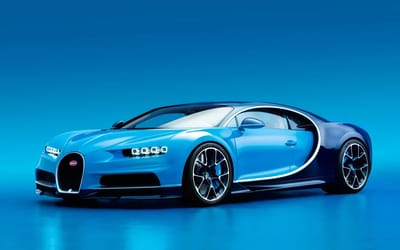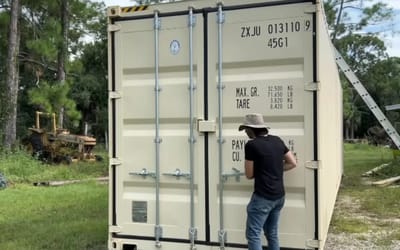Tuned Dodge Viper and supercharged Ford Mustang go head-to-head in a drag race with a surprising result
Published on Jul 20, 2025 at 11:57 AM (UTC+4)
by Callum Tokody
Last updated on Jul 16, 2025 at 2:54 PM (UTC+4)
Edited by
Kate Bain
In a match-up of two distinctly American machines, a supercharged Ford Mustang was raced against a tuned V10 Dodge Viper in a series of drag race tests.
With 850 horsepower under the hood, the Mustang brought modern forced induction to the table, while the Viper countered with natural aspiration and a lower curb weight.
Both cars ran six-speed manual transmissions and sent power to the rear wheels.
What followed was a thrilling drag race with a shocking result.
VISIT SBX CARS – View live supercar auctions powered by Supercar Blondie
Supercharged Ford Mustang struggles for grip in early races
In a video posted by Carwow, the matchup began with a standing quarter-mile drag race.
The supercharged Ford Mustang, modified by Clive Sutton, uses a 5.0-liter V8 paired with a Whipple supercharger, upgraded intercooler, and custom exhaust.
These changes bring output to 850hp and 902 Nm of torque.
At approximately 1,900 kg, it is a heavy car to launch cleanly.
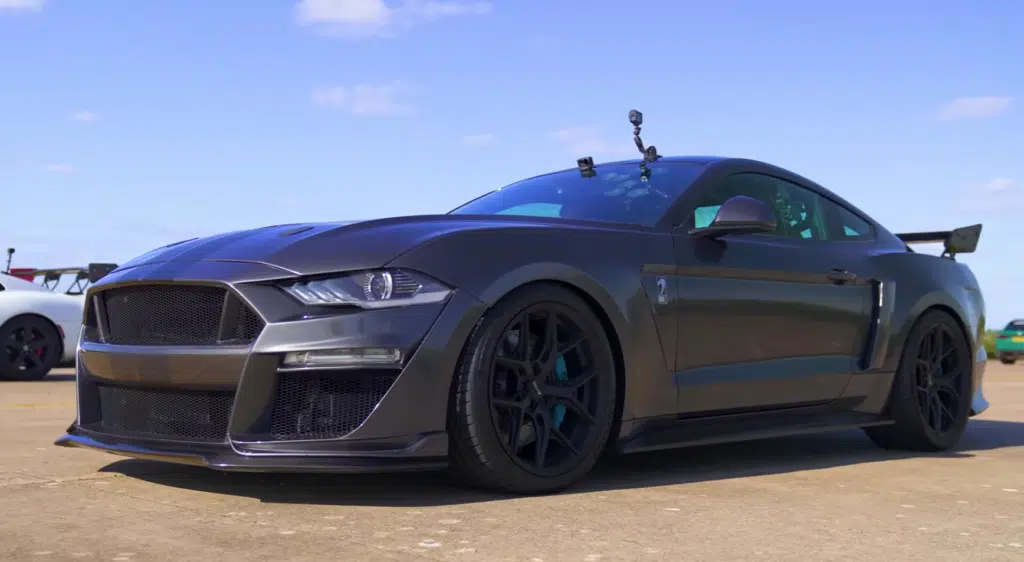
The Dodge Viper, meanwhile, featured an 8.4-liter naturally aspirated V10 with a revised exhaust system, lifting its power to 710hp and 786 Nm of torque.
Crucially, it weighed only 1,560 kg. Both cars share rear-wheel drive layouts and manual gearboxes, but the Viper’s lower mass gave it an early edge.
In the opening race, the Viper posted a 12.3-second quarter-mile time.
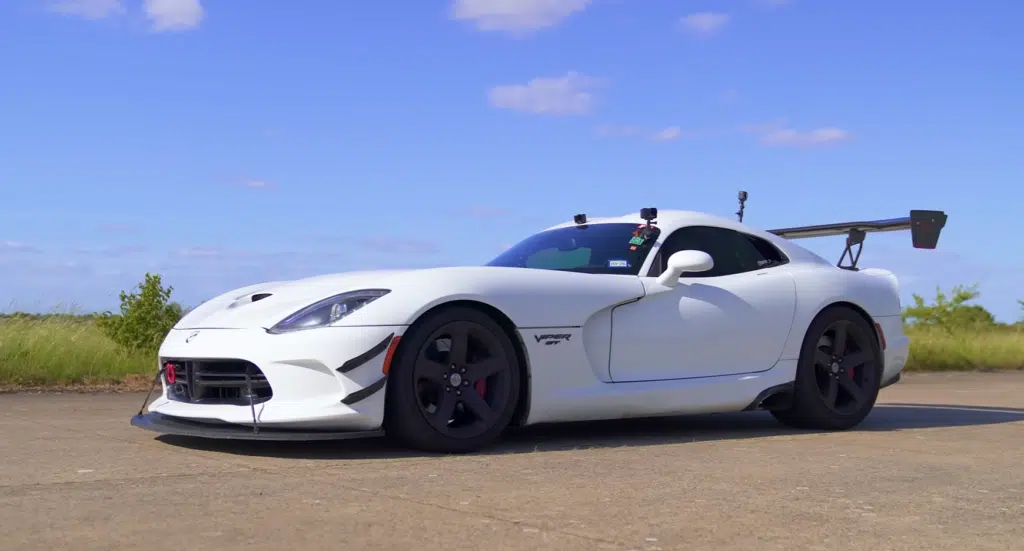
The Mustang finished in 12.6 seconds after a slower launch.
After raising the Mustang’s launch control rev limit from 4,500 to 5,500 rpm, a second run gave the Ford a win.
In a third and final race, the Dodge Viper regained control and took the round.
Rolling starts favor the Dodge, but the Mustang punches back
The second segment of testing included rolling races, which highlighted the different tuning setups.
From 40 mph in second gear, the supercharged Ford Mustang took longer to build boost, but once engaged, it overtook the Dodge Viper before the half-mile marker.
The next test, starting at 50 mph in sixth gear, shifted the advantage back.
The tuned V10 in the Viper responded immediately, maintaining its lead from start to finish.
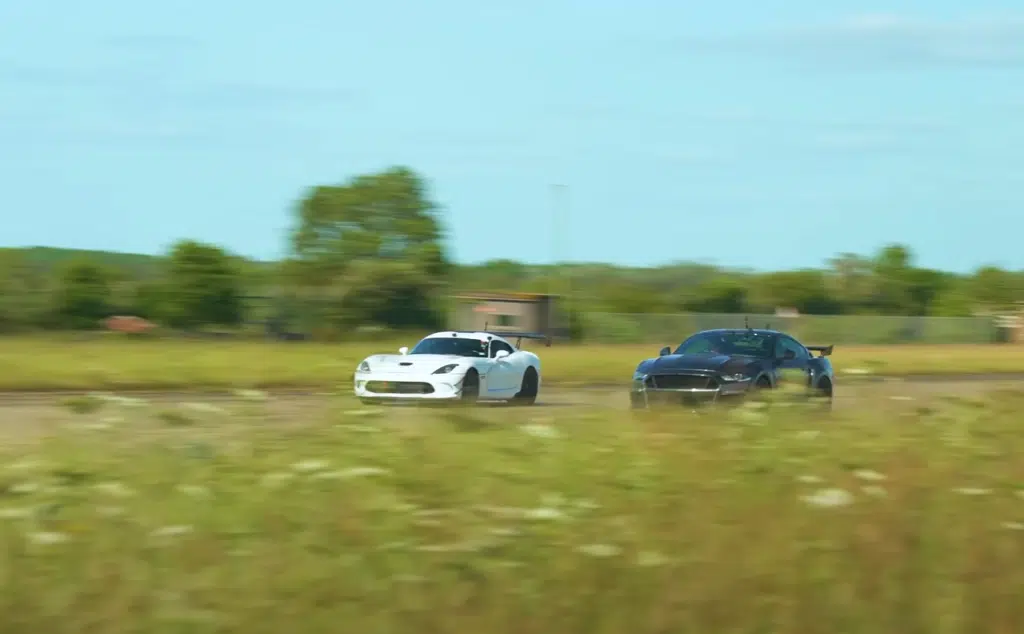
Braking distances provided further separation between the two cars.
The Mustang’s additional weight led to noticeably longer stopping distances.
The Viper, again aided by its lighter build, stopped in less time and with more control.
Throughout each format, including the standing start, rolling race, and braking test, the supercharged Ford Mustang and Dodge Viper exposed different strengths.
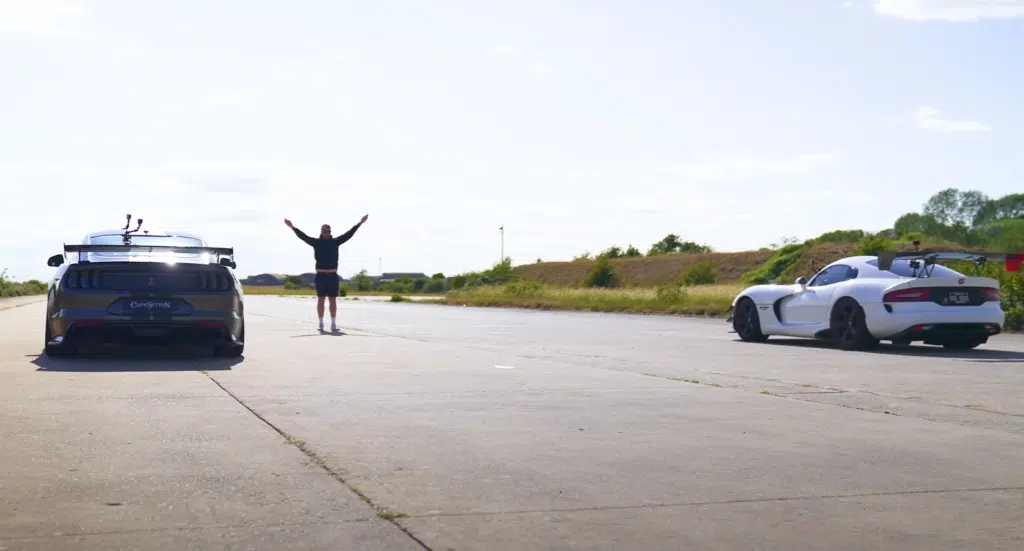
The Mustang offered peak performance potential, but only when its setup was dialed in.
The Viper showed consistency, relying on immediate throttle response and a balanced power-to-weight ratio.
Click the star icon next to supercarblondie.com in Google Search to stay ahead of the curve on the latest and greatest supercars, hypercars, and ground-breaking technology.
DISCOVER SBX CARS: The global premium car auction platform powered by Supercar Blondie
Callum Tokody is a content writer at Supercar Blondie, where he covers the latest in the automotive world with a focus on design and performance. With a background in automotive journalism, he has contributed to a range of publications in Australia and the UK. In addition to his writing, Callum also heads up PR and communications, helping to build and strengthen partnerships within the industry. Outside of work, he’s a design enthusiast with a soft spot for anything with a V8 and a good story.

